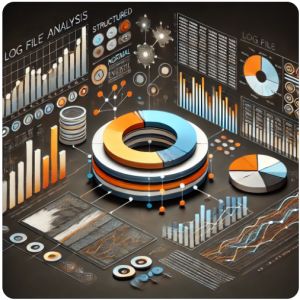Who hasn’t seen them, the diverse tools that are implemented every year by motivated students and become an integral part of a company’s infrastructure over the years. Or those software solutions that a former developer of a company has designed according to special requirements and now nobody knows exactly how to adapt the software. Many of these legacy tools continue to be used without ever being maintained or even modernized.
In the fast-moving world of technology, dealing with legacy software is often a challenge for these companies. Many of these tools or systems are difficult to maintain and can no longer keep pace with modern requirements. By modernizing legacy software, the digitalization of the company can be driven forward, the business value of users increased and security risks minimized.
In this blog post, we describe our best practice for customized legacy code modernization.
1. Inventory: understanding what is available
The first step on the path to modernization is a thorough inventory of the legacy software. The following questions should be answered:
- Which technologies and programming languages are used?
- What dependencies and integrations exist?
- Which parts of the software are critical for daily operation?
- What are the biggest problems and weak points?
Only a detailed understanding of the current situation and the resulting problems makes it possible to plan targeted modernization measures.
2. Set goals: What should be achieved?
Before the actual modernization can begin, clear goals should be defined. The more precisely the customer’s goals and ideas can be specified, the better the customized software solution will be in the end.
Examples of such goals could be:
- Improved maintainability and expandability
- Increased performance and scalability
- Increasing security and compliance
- Reduction of operating costs
- Integration of new functions and technologies
3. Strategies for modernization
There are various approaches to modernizing legacy systems, which are suitable in different ways depending on the initial situation and objectives:
a) Refactoring: Refactoring involves gradually improving the existing code without changing the functionality. This leads to better readability of the code, reduces complexity and optimizes the existing architecture. Refactoring is particularly suitable if the software is updated at regular intervals and can be continuously improved.
b) Re-Engineering: This involves developing the software from scratch, taking existing functionalities and requirements into account. This enables a fundamental restructuring and the introduction of modern technologies, but requires a considerable amount of resources.
c) Migration: Migration involves transferring the existing software to a new platform or environment, for example from a local server to the cloud. This can improve scalability and flexibility, but requires careful planning and implementation to avoid downtime and data loss.
4. Technological decisions: Choosing the right tools and platforms
Choosing the right technologies is a decisive factor for the success of modernization. This includes:
- Programming languages and frameworks that enable easy maintenance and expansion
- Platforms that offer scalability and flexibility (e.g. cloud platforms)
- Tools for the automation of tests and deployments
- Security solutions that meet the latest standards
5. Agile approach: Step-by-step implementation and continuous improvement
An agile way of working can make the modernization process much easier. Through step-by-step implementation and continuous improvement, risks can be minimized and quick successes achieved. Important elements of an agile approach are:
- Regular feedback loops with the users
- Iterative development cycles
- Automated testing and continuous integration (CI/CD)
- Transparent communication and collaboration within the team
6. Change management: taking people and processes into account
The modernization of software affects not only the technology, but also the people and processes in the company. Successful change management is therefore essential::
- Training and further education of employees
- Involving users in the modernization process
- Transparent communication of goals and progress
- Adaptation of business processes to the new technical possibilities
Conclusion
Modernizing legacy code is a complex task that requires careful planning and execution. By conducting a thorough inventory, setting clear objectives, choosing the right modernization strategy and adopting an agile approach, companies can future-proof their existing systems. The people and processes in the company should not be neglected in order to ensure a smooth transition. With the right approach, outdated code can be transformed into a modern, efficient and secure software landscape that can meet the demands of the future.




